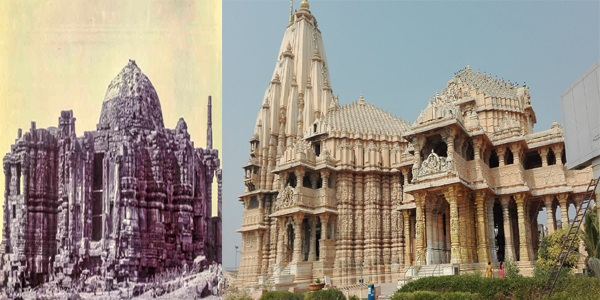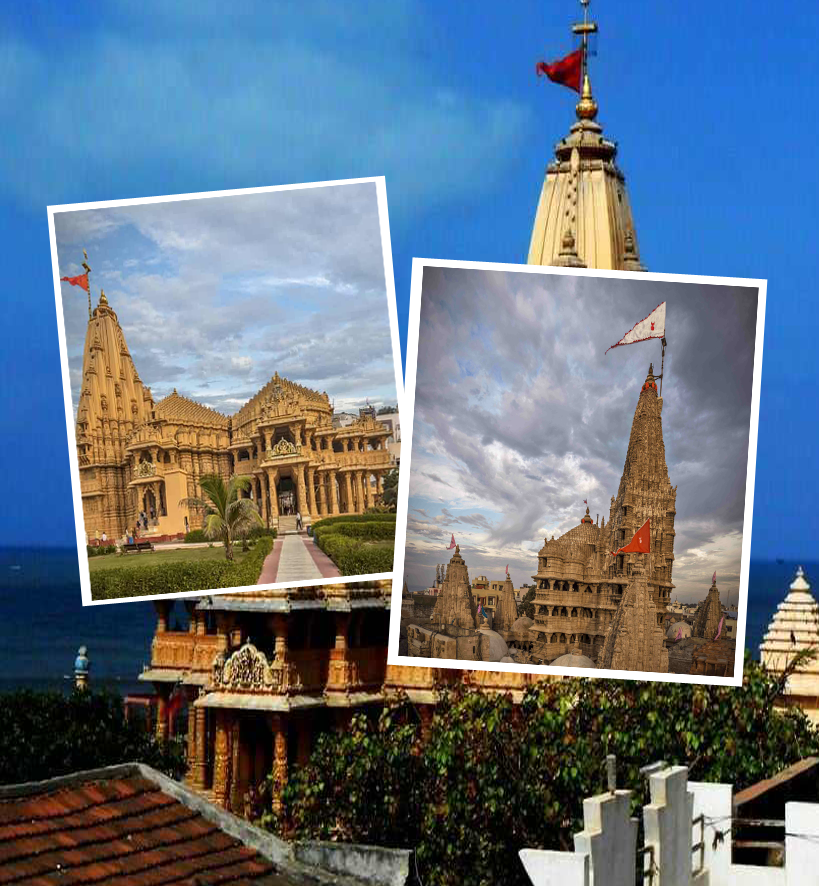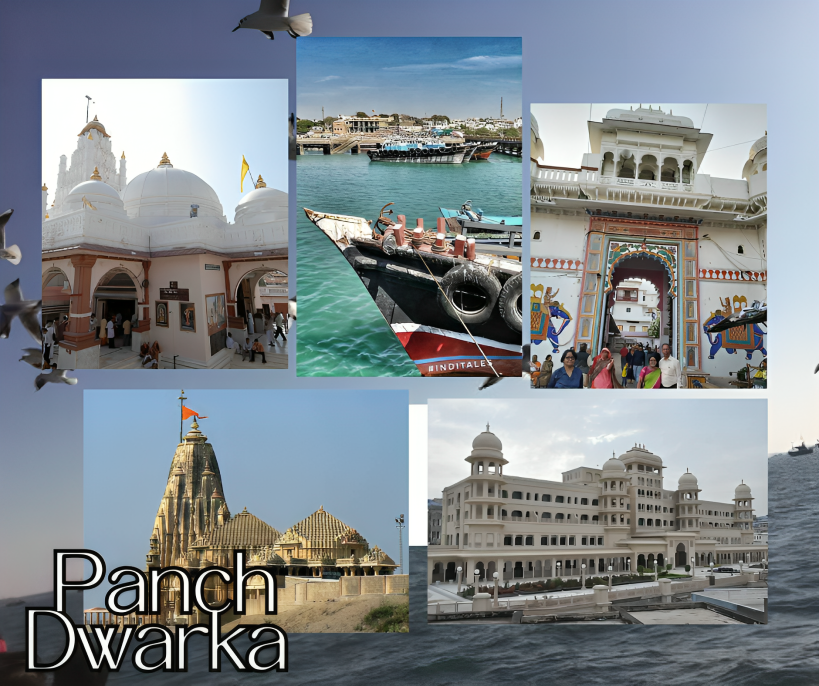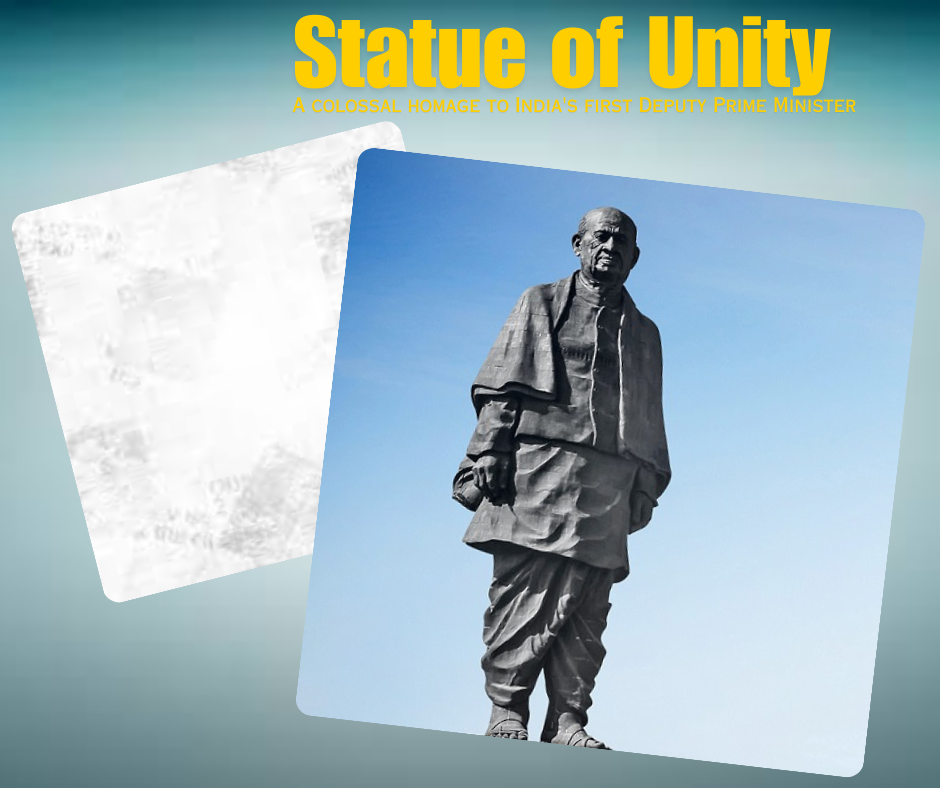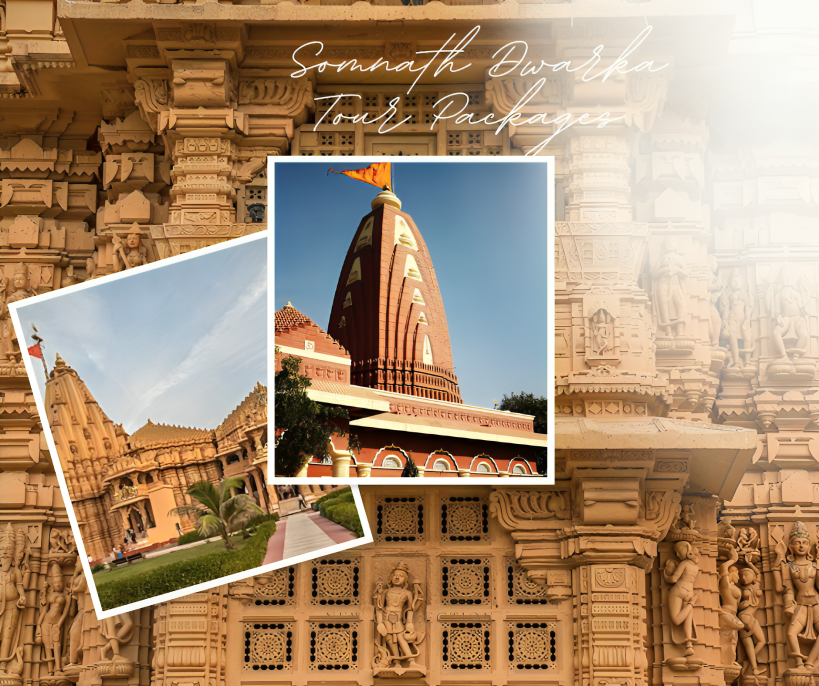The Somnath Temple has a long and storied history, dating back to ancient times. According to legend, it was originally built by the Moon God (Som) to atone for a curse. The temple has been destroyed and rebuilt multiple times over the centuries, reflecting its resilience in the face of invasions and natural calamities.
The original temple is believed to have been constructed by Lord Soma in the 5th century BCE.
It was destroyed by Mahmud of Ghazni in 1025 CE, leading to several reconstructions, including the most recent one in 1951, under the guidance of Sardar Vallabhbhai Patel.
The temple is renowned for its grandeur and significance in Indian religious history and has been an important symbol of resilience for Hindus.
Gujarat Somnath History
Exploring Gujarat’s Somnath History
Gujarat has the vast historic creations coming up with the captivating stories behind. Somnath temple in Gujarat is famous for the spiritual touch and it has ample historic significance. We come up with the great Gujarat trips and you will find the opportunity to explore the famous Somnath Temple. It’s one of the popular pilgrimage sites in India and lakhs of devotees gather to worship Hindu Lord Shiva. Once you get familiar with the Somnath history you will feel motivated to explore the holy site.
Facts to Know About Somnath Temple
The temple is located in Prabhas Patan, Veraval and here you will feel the divine blessing of Shiva. You will feel happier to explore one of 12 jyotirlingas and also you will it’s existence in the Shiva Purana. The temple has become an pilgrimage site since the ancient times and it holds intense spiritual significance. This site features the confluence of three rivers Kapila, Hiran and Saraswati.
The original temple was built 2,000 years ago. Muslim rulers and attackers attacked the temple several times and it was rebuilt in the later times. The peaceful ambience of the temple takes brings the bliss and you will get closer to the God God. The laser light show also gives you a clear idea of the history behind the temple. The captivating lights motivate you to enjoy the entire show infused with music.
Establishment of the First Jyotirlinga
According to Hindus, the town of Somnath witnessed the formation of the first jyotirlinga. There are 11 other propitious jyotirlingas and Somnath becomes one of the popular sites for Shiva devotees.
Temple Myths
There are several fascinating stories associated with the temple increasing curiosity of Hindu pilgrims. According to a mythological tale, Hindu God Chandra (Moon) has commenced atonement here and it helps him get rid of a curse. Chandra Dev’s father-in-law Daksha Prajapati cursed him and he selected this place to free himself and thus this place gets utmost spiritual importance. Chandra wedded Dksha Prajapati’s 27 daughters, however, it’s said he only loved Rohini and abandoned his other wives. This made Dakha Prajati disconcerted and he cursed his son-in-law. Chandra Dev thus got anxious and came down to Pravas Patn to pray to Lord Shiva. His intense prayers satisfied Shiva and thus Chandra Dev got free from the curse. The Hindi God Moon expressed his gratitude by establishing a jyotirlinga which got recognition as the famous Somnath Temple.
Frequently Asked Questions
-
What is the history of Somnath Temple?
-
Why was the Somnath Temple destroyed?
The Somnath Temple has faced repeated destruction over the centuries due to invasions:
The first major destruction occurred in 1025 CE when Mahmud of Ghazni, the ruler of the Ghaznavid Empire, raided the temple and plundered its wealth. This was a significant moment in Indian history, symbolizing the vulnerability of religious and cultural monuments during medieval invasions.
Later, the temple was rebuilt by various rulers, including the Chauhan kings and Solanki kings of Gujarat. However, the temple faced further invasions and destructions under Mughal emperors and other foreign invaders until it was reconstructed again in modern times. -
What is the significance of Somnath Temple?
The Somnath Temple is not just an architectural marvel but holds deep religious significance. It is one of the twelve Jyotirlingas of Lord Shiva, which are sacred sites for worshipping Shiva. According to Hindu mythology:
Lord Soma (the Moon God) was cursed by his father-in-law, Daksha, and sought Lord Shiva's blessings to alleviate his suffering. To seek redemption, Soma built the original Somnath Temple.
It is believed that the temple is where Lord Shiva blesses his devotees, and visiting the temple is considered a way to purify the soul. -
What is the connection between Somnath and Mahmud of Ghazni?
Mahmud of Ghazni’s invasion of Somnath in 1025 CE is one of the most significant events in the temple's history. Ghazni's army plundered the temple, looted its wealth, and destroyed its structure. This invasion, along with others throughout history, left a deep mark on the temple and its legacy. Despite these attacks, the temple was rebuilt multiple times, symbolizing the resilience of the devotees and the temple's sacredness.
-
Who rebuilt the Somnath Temple in modern times?
The Somnath Temple was rebuilt in 1951, under the leadership of Sardar Vallabhbhai Patel, who was instrumental in its reconstruction after India gained independence. The reconstruction was supported by Dr. K. M. Munshi, the founder of the Somnath Trust, and other prominent leaders. The modern temple stands as a symbol of India's cultural and religious heritage and is a significant spiritual destination for devotees.

